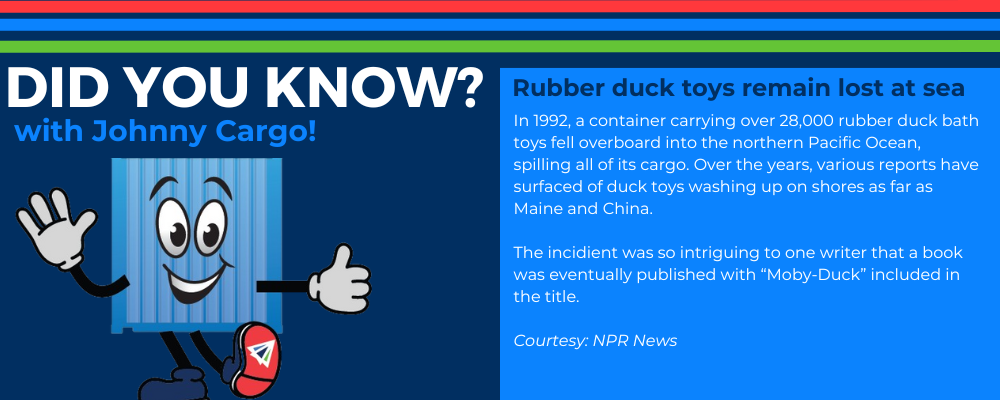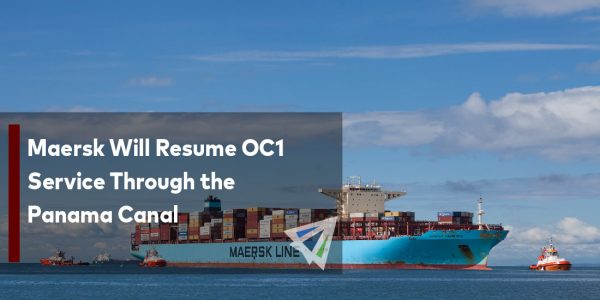Competitive Edge
April 10th, 2024
Stay Current with InterlogUSA
Latest Industry Happenings and Market Updates:
IMPORT: Asia to North America (TPEB)
Recent Developments:
- General rate increases (GRIs) were not implemented at the start of April.
Rates: The downward trend on rates continues to hold.
Space: Space is mostly open but has tightened in pockets.
Capacity: According to the Journal of Commerce, ocean carriers are reducing their instances of blank sailings and increasing capacity in this market. The change in strategy suggests that continued longer voyages around Africa are requiring more vessel allocation than when the diversions began in December.
Equipment: Investments from independent equipment providers (IEPs) mirror expectations of an upswing in freight activity.
TIPS:
- Hold your logistics partners accountable for frequent updates regarding current market conditions and routing impacts.
- Be flexible and adaptive to alternative service options, especially as it relates to potential savings on cost or transit.
IMPORT: Europe to North America (TAWB)
Rates: Rates have decreased slightly.
Space: Space is open.
Capacity: This trade’s capacity glut has shown signs of improvement. There is lesser imbalance between capacity and demand.
TIPS:
- Book at least three weeks prior to the ready date.
- Familiarize yourself with the European Union’s ETS program and how its carbon taxing is impacting operating costs for ocean carriers.
EXPORT: North America to Asia
Rates: Rates have climbed after falling throughout March.
Capacity: Space remains open, particularly from West Coast ports.
Equipment: Export containers are being diverted to other East Coast ports of loading following the Port of Baltimore’s indefinite suspension to ship traffic.
TIPS:
- Insufficient communication with sailing schedules can lead to higher detention and demurrage fees as well as higher trucking and storage costs. Ensure your logistics partners are not keeping you and your cargo in the dark.
Freight News
More on the Baltimore Bridge, Future Outlook on the East Coast Ports
The Port of Baltimore continues to remain closed indefinitely, while salvage crews have started to remove the containers from the cargo ship involved in the bridge collapse.
We are noticing ocean freight container rates on this realm to be steady and stable.
Additionally, with diverted cargo being rerouted to other ports on the East Coast, this can create some challenges including more travel times and potential bottlenecks. Those transporting hazmat goods are facing other adjustments, such as an extra 15-20 minutes being adding to their travel times as they have to go to the western side of Baltimore via Interstate 695.
But what about the future outlook along the East Coast ports?
Something to keep in mind regarding the future outlook on East Coast ports is the impact of the labor negotiations. No new agreement has been reached, as the contract between the ILA and the United States Maritime Alliance expires on September 31st, 2024.
If a contract is not reached by the expiration date, there is concern that significant and widespread disruption will occur on the East Coast ports. This could have a domino effect and lead to increased rates and/or have some shippers reroute some cargo to the USWC.
Some of the key discussion points of these contract talks are labor provisions, wages, benefits, automation and working conditions.
Europe’s Decarbonization Efforts Need More Funding to Reach ‘Ambitious’ Goals
An association of 43 groups that represent various sectors of transportation in Europe said at a conference last week, without extending the funding via the Connecting Europe Facility (CEF) instrument, decarbonization goals for 2030 and 2050 will be challenging to achieve.
“Extending the CEF budget for key priorities such as ERTMS on-board deployment (a train speed monitoring platform), whilst ensuring funding is available to small and medium railway undertakings, is fundamental for enabling modal shift,” the Secretary-General of the European Rail Freight Associations said in a statement.
The EU Green Deal has put a variety of proposals to make the EU’s climate, energy, transport and taxation policies fit the reduction of greenhouse gas emissions by at least 55% by 2030, compared to 1990 levels. Meeting these goals largely depends on shifting the amount of volume from road to rail.
Did You Know? With Johnny Cargo!

Johnny Cargo sure knows a lot! Other than fun and random facts however, Johnny also can provide insight into InterlogUSA’s many service and pricing options. He is always available for a quick conversation. Click here to chat with Johnny Cargo.
Watch Our March Webinar
Sign Up For Our April Webinar
Our next webinar is Wednesday, April 17th, at 10am CDT!
Topics will be announced soon. Register Today!
Note: After you register, if you do not see your webinar invite to make sure you check your junk/spam email for the webinar invite. Reach out if you have any questions at support@interlogusa.com)
If you have any topic suggestions or questions for our experts..
please reach out to us at support@interlogusa.com
Interlog  Insights
Insights
Last week we introduced our week one April insights. We discussed how Asia-U.S. blank sailings have been decreasing. We also talked about THE Alliance delays their EC4 service from Asia. While some other ocean carriers announced a vessel-sharing agreement on a north-south service on the USEC.
Our subscribers (it’s free to sign-up) are able to see our weekly insights every month in real time when they get sent out every Friday at 10am CST.
Sign up for our
industry answers
Our team works to provide valuable, unique, and relevant content to assist you in finding solutions. Sign up now.

